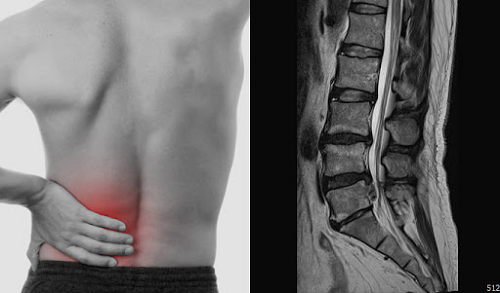Eighty percent of patients with lumbar disc are better off without surgery.

It’s a symptom of a lumbar disc.
The main symptoms of back disc patients are back pain and leg pain (radial pain, sciatic neuralgia). In a lying position, raising the legs with symptoms to the knees in an open position causes severe pain that is released to the tip of the toes, and when the knees are bent, the symptoms disappear, which is typical of the waist disc 시알리스파는곳
Pain often occurs extensively from the waist to the hips and legs, and the pain can also worsen when moving or changing posture. In addition, you may feel pain when you cough or sneeze, feel heavy pressure on your lower body, and your legs may become thin and weak.
Even with the same lumbar disc, the pain region varies depending on where the nerves are pressed, and different sensory abnormalities or muscle weaknesses occur. Symptoms other than pain include stiffness of the back muscles, pressure pain, and exercise restrictions, and sometimes the torso tilts to one side.
Is it possible to treat such a waist disc without surgery?
If pain occurs due to a back disc, it is recommended that non-surgical treatments as much as possible be conducted first based on a doctor’s precise diagnosis.
Non-surgical treatments include non-surgical procedures, medication, and physical therapy. First of all, if pain is reduced by controlling it and there are no major inconveniences, measures can be taken to prevent recurrence through exercise treatment, posture correction, and lifestyle correction.
Non-surgical spinal surgery is a treatment that improves pain by injecting inflammatory relief drugs while checking the lesion area through real-time imaging devices. A typical non-surgical procedure is an epidural steroid injection. It is the most commonly performed procedure for pain and nerve treatment, injecting steroids, a powerful anti-inflammatory drug, into the outer part of the pericardium, which is tightly wrapped in the spinal cord nerves. This injected steroids suppress inflammatory reactions, which are the main causes of pain, and dilute and remove inflammatory proteins and neurotransmitters that cause pain.
Other non-surgical procedures include neuroplasty and hydrolytic surgery. Neuroplasty is a treatment that inserts a very thin tube about 1mm in diameter into the spinal canal to inject drugs directly into areas where nerves are bonded and compressed. The tube is inserted through the tailbone and is safely operated by local anesthesia without cutting the skin. The tube inserted in the spinal canal can be located in the area where the nerves and discs are attached, detaching adhesion and injecting drugs into the exact lesion area, which can quickly alleviate inflammation.
Hydrophobic surgery is a treatment that reduces the volume of the protruding disk by inserting a special catheter that emits high-frequency heat energy into the escaped disk and applying heat. Patients who undergo this procedure quickly reduce pain by relieving nerve pressure from protruding disks. These non-surgical spinal procedures are non-invasive, so they are not bleeding, are less likely to cause inflammation or complications, and are simple treatments that can be returned to daily life without being hospitalized.
Kang Seok, a professor of rehabilitation medicine at Guro Hospital of Korea University, said, “If back pain lasts for more than two weeks and symptoms of numbness, you need to suspect a lumbar disc and have a thorough examination. First, non-surgical treatment is recommended rather than surgery.”